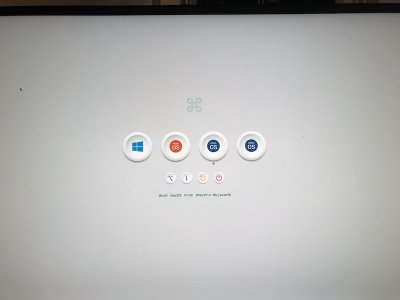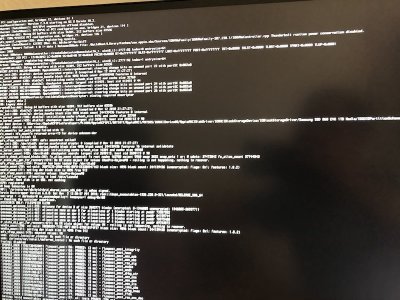I can see the USB3.0 and USB2.0 controllers implemented under DSB1 (TB) in IOREG when connecting the LG 5K2K via one of the Thunderbolt3 (USB-C) ports of the Titan Ridge although no USB2.0 or USB3.0 cables are connected to the monitor at present.
Yes, DSB1 (downstream bus 1) is the downstream bus for a Thunderbolt port of your GC-TITAN RIDGE. DSB2 contains the USB controller (XHC5) of your GC-TITAN RIDGE. DSB4 is the other Thunderbolt port of your GC-TITAN RIDGE which has nothing connected to it. DSB0 contains the Thunderbolt NHI.
UPS0 is the Titan Ridge controller of the LG5K2K. pci-bridge@2 is a downstream bus of that controller and contains the Titan Ridge USB controller (pci8086,15ec).
Both pci8086,15ec (your display's Titan Ridge) and XHC5 (your GC-TITAN RIDGE) contain two USB ports (one per Thunderbolt port).
There's a four port hub connected to the pci8086,15ec (your display's Titan Ridge). The display has a USB device connected to the fourth port of the hub for the controls of the display (such as brightness control). Two of the hub ports are probably for the two USB-A connectors on the back of the LG display. The remaining port is unused? Seems like a waste of a port. Maybe it's used in a non Thunderbolt configuration for something.
You should test the ports of the LG5K2K with a USB 2.0 device (like a mouse) and a USB 3.0 device (like a flash drive). Compare what happens when you change the USB Upstream option in the display's menu.
See what happens when you set the USB Upstream to USB-B (have a cable connected from your computer to the USB-B input of the display). In this case, I would expect the four port hub connected to pci8086,15ec to be moved to the USB port of your computer (but I'm not sure if this is true in the case of a Thunderbolt connection). Only the USB 2.0 hub would move - the USB 3.0 hub will not exist.
See what happens when you try to use USB-C instead of Thunderbolt after you get the cable. If the USB upstream option is set to USB-C, then I expect that 5K2K 60Hz over USB-C is impossible because it will use USB 3.0 - the USB 2.0 hub and USB 3.0 hub will move to your computer's USB port. If the USB Upstream option is set to USB-B, then 5K2K 60Hz should be possible (if the display is smart enough to allow it) and only the USB 2.0 hub will exist and be moved to your computer's USB port.
Will this approach would be Windows only..
Right, moninfo.exe is Windows only, but the DDC programs for controlling brightness exist for macOS and Windows. They are open source and probably can be modified to obtain EDID and DisplayID if they don't already.
#3 and #4 implement MY custom SwitchResX resolution with 5120 × 2160 @ 59.990Hz.
But I don't think SwitchResX created or modified those EDIDs. In other words they would be that way with or without your custom resolution. What the custom resolution does is tell the macOS that there is a timing that it should consider which is useful in this case where it was ignored for some reason, since it did exist in the EDID. Well, you can see what SwitchResX does when you compare the override file it created with the original.
Within configuration #4 detailed in post
#11555 above, the LG 5K2K continues working with 5K2K @59,990 Hz single display implementation when removing one of the DP cables connecting the GC-Titan Ridge with the two DP ports of my Vega. Only the additional LG 38UC99-W display connected via the DP1.4 port of the GCTitan Ridge with 3860x1600 @60Hz resolution is lost in this case.
This fact and the general LG 5K2K incompatibility with the GC-Alpine Ridge suggests that
the LG5K2K does not use a standard DisplayPort1.2 Dual Link SST!
SwitchResX still reports 700+ MHz pixel clock? Very interesting. If that's true, then why does Apple supply an mtdd file? Maybe the mtdd file is only for Alpine Ridge based Macs and might be the cause of the problem (or part of the problem) with the Titan Ridge MacBook Pro 2018. Well, if Apple supported DisplayID properly, and the display had proper Display ID information, then the mtdd files wouldn't be necessary. Maybe try moving that file to a different location.
SwitchResX results for an Alpine Ridge Mac would be useful.
You can make the LG 38UC99-W display work with the LG5K2K by connecting the LG38 directly to the Vega?





